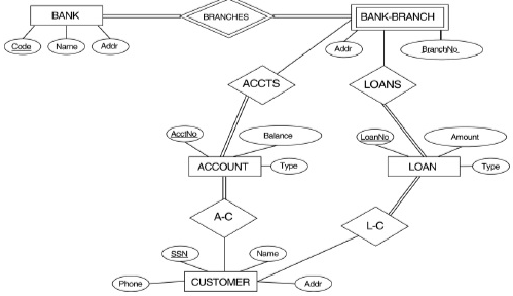This post is related to Conceptual database design, conceptual database model, Software Development Life Cycle, ER Diagram
Presentation: Conceptual Database Model
What is Conceptual Database?
While developing a new (software) system or upgrading an existing one (to automate any organization), there requires creating new software applications at the frontend and a well designed database at the backend. Any success of the modern enterprise critically rely on the ability to design databases and associated software.
Database design requires understanding both the operational and business requirements of an organization at first and then the the ability to model and realize those requirements using a database. Developing database and information systems is performed using a development lifecycle (Software Development Life Cycle – SDLC), which consists of a series of steps.
During SDLC, the first step for system development team is to understand the requirement of their customer (organization). Requirement Specification is the record of all the features and functionality that the new system should meet. To communicate and make sure you’ve understood the requirement correctly, as well as, to make your customer understand what you are going to offer, there requires a tool suitable for both parties.
The business people may not feel comfortable with the technical details and drawing, and in many case the level of detail is distracting and complicating to the proper understanding of the solution suggested. Thus, Conceptual Database Design proves to be very important for the effective communication.
Conceptual Database Model
A conceptual data model is a summary-level data model that is most often used on strategic data projects. In simple words, it is the most simple representation of database you are going to develop. It typically describes an entire enterprise. Due to its highly abstract nature, it may be referred to as a conceptual model.
Conceptual database design involves modelling the collected information at a high-level of abstraction without using a particular data model or DBMS.
- Conceptual database are independent of DBMS.
- They are free from the technical details such as the field size, field types, constraints and so on.
- Allows for easy communication between end-users and developers.
- Has a clear method to convert from high-level model to relational model.
- Conceptual schema is a permanent description of the database requirements.
ER Diagram is one of the most popular Conceptual Database Designing Model.
Following is an example of Bank Conceptual Database
You can comment below and we can continue discussing if you still have confusion regarding conceptual database model.


Chandra Tamang says
I am feeling very tough this topic and suppose to out of computer operator course. If it belongs to CO course please clarify the all the topic as Conceptual Model. It is written very simple and easy to understand. So I am clear in the following question asked by …………..
Which database level is closest to the users?
(A) External (my answer)
(B) Internal
(C) Physical
(D) Conceptual
Chandra Tamang says
asked by Shankar Arjel